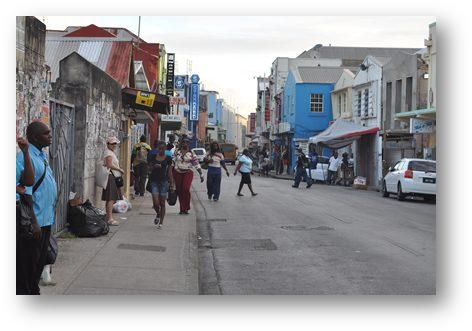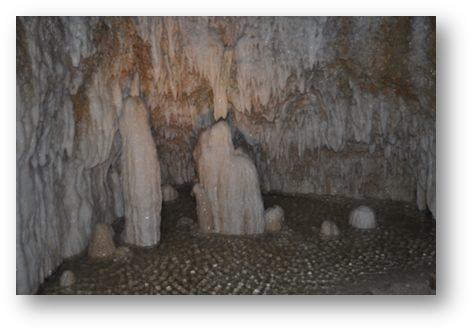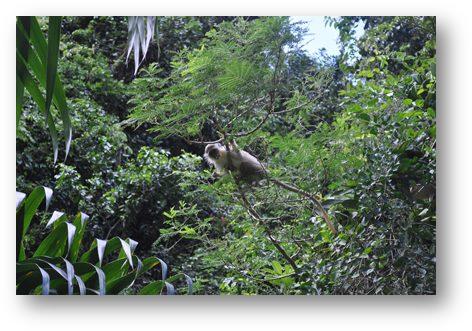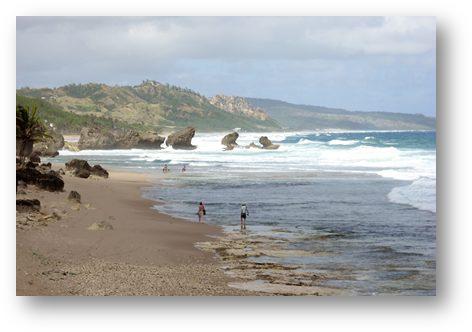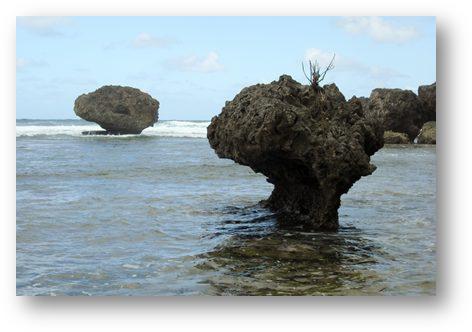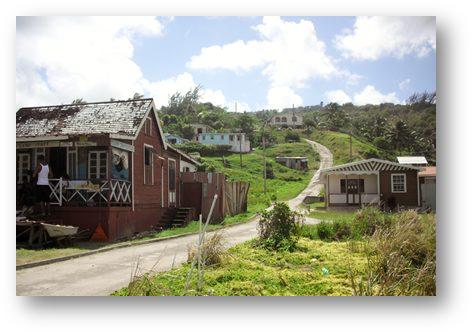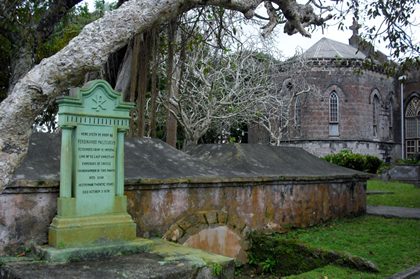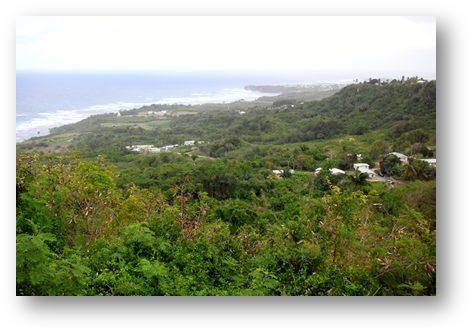Barbados

Date: 3rd February 2013 We’ve been in Barbados now for a few weeks and have started to form an opinion of the place. It’s spectacularly friendly. Complete strangers will approach you in the street and offer warm greetings. Everyone is happy to meet you and exchange banter. People will sing to themselves all of the time, sometimes out loud. It’s a little disconcerting to be sitting in the front seat of a taxi with a driver who is many pounds heavier then you, who starts to sing to himself under his breath; then as he concentrates on his driving his singing becomes more explicit, even though he’s using a falsetto voice as the singer of the song he is mimicking is female; and then you realise that the words of the song are expressing undying love to a paramour!
The country side is a little confusing. From a distance it is very familiar and looks distinctly English. It is mostly a low undulating landscape. Outside of the towns everything is either farmed or looks like parkland. Nowhere on this island is truly wild. There are large fields of green crops, surrounded by hedges or woodland copses. Its only when you look closer at the vegetation that you realise that the flora is distinctly tropical. Wherever you look you will see some sort of habitation or other structure. And the place names seem to be almost entirely borrowed from Britain (Worthing, Hastings, Scarborough, Yorkshire, Scotland, etc). The narrow roads are generally sunk a few feet below the surrounding farmland with either grassy banks or stone retaining walls looking very similar to those you will find in the English west country. Geologically Barbados is very different from the other Caribbean islands, being formed almost entirely of limestone and coral. And In the centre of the island are an extensive network of underground caves where water has eroded vast caverns in the rock. There is a very organised tour of the caves where you sit in a trolley car and are taken through the caverns with strict instructions not to touch anything. Nearby there are a number of deep gulleys where in the past the roofs of limestone caves have collapsed. The walls of the gulleys are completely overgrown with tropical vegetation and are home to a number of animals, including green faced monkeys.
On the eastern Atlantic facing coast there is a beautiful small town called Bethsheba. The vegetation here is richer and a little wilder and more like we had expected from a tropical Caribbean island.
Now I don’t normally go out of my way to visit churches. But close to Beshsheba is the parish church of St Johns built sometime in the early 1600’s just after the first British settlers arrived on the island. It’s been destroyed by hurricanes and fires and rebuilt a couple of times since then I believe. The reason for the visit is that it contains a fascinating tombstone. So whilst in the area we had to pay a visit and we were well rewarded. The church and its grounds were placed strategically on an escarpment overlooking the coast and they were so spectacularly aged. The patina and texture of the stonework and tombs and the tangled vegetation in the churchyard were a feast for the eyes. We soon found what we were looking for, the final resting place of Ferdinando Paleologus, died in 1678, who is supposed to be the last known descendent of the final emperor of Byzantium (Constantine XI Paleologus) , the one who met his end on May 29th 1453 when the Muslim hordes finally overran the city. I had read about this in one of Patrick Leigh Fermor’s books and having also spent some time in Turkey over the last few years and been intrigued by its history and culture it seemed only fitting to make the connection by actually visiting the tomb.
|

